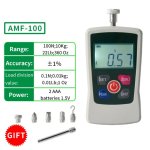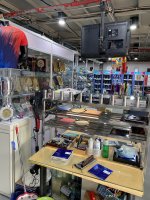I don't know. I would have assumed so at the time.
well, it is clear you don't know and assume ESN or Daiki just came on recently to make people stop making rubbers because of Economic of scale.
table tennis brand are mere marketing / branding companies with some R&D. I'm replying this so you have an idea, especially with your below statement.
how many brands makes rubbers?
how many brands makes blades?
no body makes clothing - its all in Asia/SEA
who makes balls? only 5 in the world, 3 in China.
So, take Stiga, Donic, Butterfly, Yasaka, Nittaku
rubber? Butterfly makes them own
blade: Butterfly too + Stiga
Yasaka is made by woodhouse
I can't comment on Donic and Nittaku blade
balls... hm.. only Nittaku make them own.
I would be of the opinion that there is not a regular player anywhere whose game would be worse if they had never bought an overpriced Tenergy rubber. I firmly believe they'd have settled on something for half the price and been just as good at TT.
To me all this marketing drivel from Butterfly is rubbish but if you make it some ppl will like it and others like having the premium rubber and sometimes it's placebo effect. Put it this way, I've seen more players improve from moving away from Butterfly to different (often slower more controled rubbers) than I have seen improve from moving to Butterfly. That's basically the root of my no Butterfly position. 11 yrs incorporates every other rubber they made in that ''11 year's'' plus whatever small change was made to arrive at final Tenergy formula.
Of course I might just be wrong on all of this but I often wonder if pro players would play butterfly if they weren't paid to do so. And I wonder how many international tournament winners play Butterfly rubbers, a very small % I'd guess.
since Butterfly make's they own rubber, and for any one with a decent level can tell, Tenergy 05 is no gimmick.
1 rubber can take on a decade of ESN rubbers (about 3 to 5 generations), that is no gimmick too.
we talking about rubber performance and not amateur player performance - because amateur can use anything, and they are still amateur.
for Butterfly, many pros who are not butterfly sponsored, still end up using butterfly and that is no gimmick.
this is both blade and rubbers.
blade one can hide by handle lens, but rubbers, one can't.
So, people know i'm not a fan of Butterfly's pricing, but in terms of rubbers and blade - they make it themselves and have one of the best quality, performance over a long time frame, that no other brand today, can match.
I haven't even discussed price yet.... and that is the crazy part - people are willing to pay premium for premium.
no one in the butterfly supply chain makes money, except for butterfly. hence i'm no fan (i sold butterfly for 2 years).
so.... money spent by the company to make good products? of course.
Else, why can't everyone make they own blades and rubbers?
some brands are really, just a marketing and sales office with a warehouse and everything is outsourced.
you talked about the economic of scale (sound like a business school professor). then why isn't sunflex the top rubber maker in the world successful (you probably haven't even heard of them before)? (the HK company zeio shared). they own the hobby bat market basically with almost every brand oem from them.
they make cheap rubber, low price, low quality, but huge quantity.
i don't see anyone using their "pro range" rubbers, search for Lion and Sunflex rubbers. No one can beat them on volume. But many beat them on quality.














